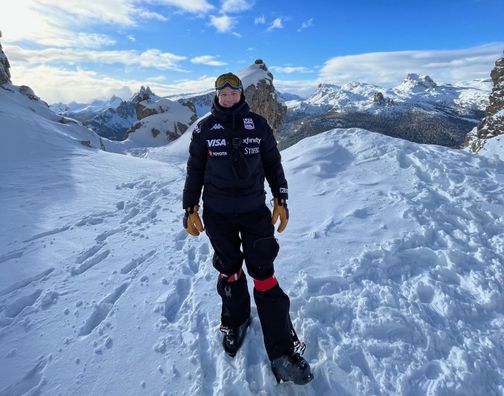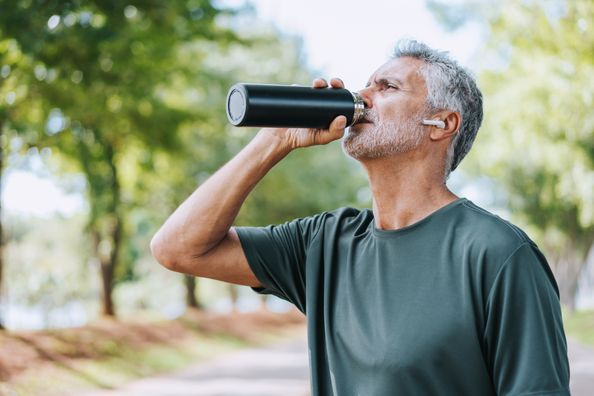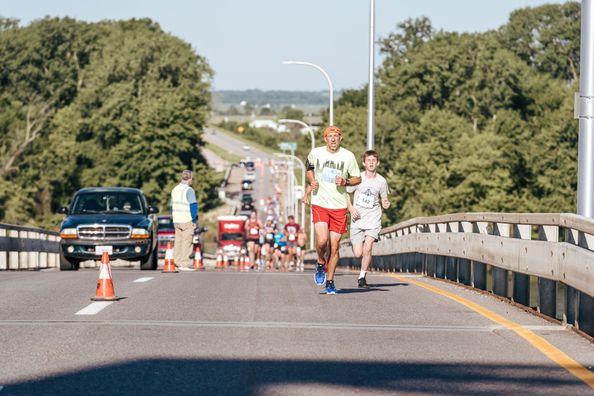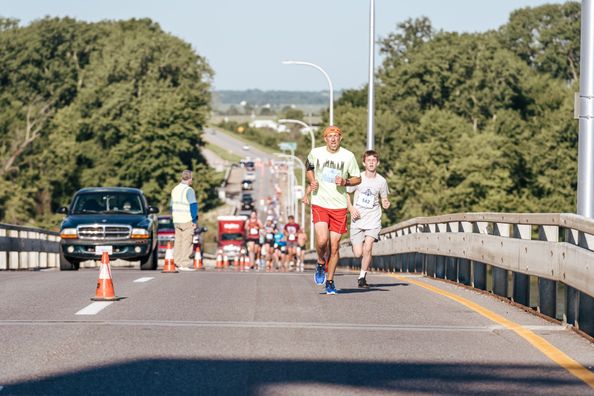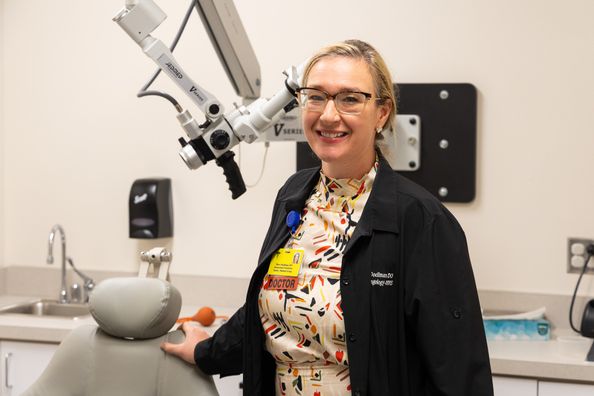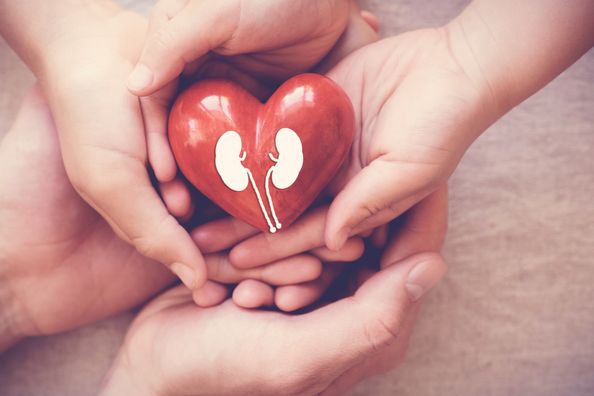The Summer Olympics captivated the world, and QMG Orthopedic Surgeon Dr. James Van den Bogaerde understands the dedication and physical demands required to compete at the highest level. He’s a member of the U.S. Ski Team physician pool and works closely with athletes to treat and prevent injuries. We asked him a few questions about his experience.
What motivated you to become a part of the U.S. Ski Team Physician Pool?
I grew up ski racing and competed through college. I was never quite good enough to be on the U.S. Ski Team as an athlete, but that was always a dream of mine growing up. When I did my fellowship in Vail, Colorado, in sports medicine, my fellowship director was the head U.S. Women’s Ski Team doctor. He knew I was capable of safely navigating steep, icy race courses, so he asked me to cover U.S. Ski Team training in Colorado and the Birds of Prey Men’s downhill at Beaver Creek. Shortly thereafter, the team needed a physician at an event in France, and they asked me to cover a women’s event in Val d’Isère. After the team got to know me a bit, they invited me to be in the physician pool, and I have been covering events annually ever since — for a little over 20 years now. I love the sport of ski racing and being a team doctor allowed me to be a part of the U.S. Ski Team, just not as an athlete.
Can you describe your role and your responsibilities with the team?
When I travel with the team, I am their physician 24⁄7. I stay in the team hotel and have meals with the coaches and athletes. Whenever they are on snow, I am with them, carrying medical supplies in case of injury. During the races, I stand at the starting area of the race, so I am available to go onto the race hill if an athlete crashes and needs medical care. Most of the race venues have very qualified ski patrol that can immobilize and evacuate an injured athlete. I am there to assist the medics and to ensure our athletes are receiving appropriate care. If an athlete is transported to a hospital, I go with them to advocate for them and ensure they receive the proper care. If they are stable, I help determine if the athlete should be evacuated to the U.S. for further treatment. I deal with everything from recurrent nosebleeds to quarantining an athlete with a viral illness from the rest of the team, to handling concussions, strains, and sprains. Fortunately, I have not needed to treat any major injuries to date. However, there are occasional catastrophic crashes with major injuries and even fatalities. Even though those severe injuries are rare, it is always a bit stressful to be at the top of a racecourse, hoping that the U.S. athletes will get down unscathed.
Are there common orthopedic issues that skiers face?
These world-class skiers train hard on and off the snow. They can experience overuse injuries — low back pain and tendinitis are common. Traumatic injuries from crashes at high speed are not uncommon. Some of the athletes may be on a concussion protocol while I am with the team or possibly returning from a prior injury or surgery. The most common traumatic injuries are knee ligament injuries or fractures, but head trauma, spine injuries, and internal organ injuries can occur from blunt trauma. Occasionally, lacerations need to be repaired — the ski edges are so sharp they can cause injury.
Can you share some memorable experiences or success stories from your time working with the U.S. Ski Team?
I have many memories from my work with the U.S. Ski Team. Being present at a race where one of our athletes wins is always memorable. As a member of the team, I get to be on the podium with the rest of the team — athletes, coaches, service techs. Being at the race when Mikaela Shiffrin became the winningest woman ski racer ever was pretty nerve-wracking during the race and exhilarating during the awards ceremony. I’m there as a physician, not wanting to see any of my athletes fall or get injured. But I’m also a fan of the sport, so it’s exciting when we get a win.
Has your role with the U.S. Ski Team enhanced your work with your patients at the clinic?
Working with elite athletes forces me to stay current with the newest injury treatment protocols and techniques. I can apply that same knowledge and experience when seeing patients in the clinic.
The Summer Olympics are captivating the world right now, and QMG Orthopedic Surgeon Dr. James Van den Bogaerde understands the dedication and physical demands required to compete at the highest level. He’s a member of the U.S. Ski Team physician pool and works closely with athletes to treat and prevent injuries. We asked him a few questions about his experience.
What motivated you to become a part of the U.S. Ski Team Physician Pool?
I grew up ski racing and competed through college. I was never quite good enough to be on the U.S. Ski Team as an athlete, but that was always a dream of mine growing up. When I did my fellowship in Vail, Colorado, in sports medicine, my fellowship director was the head U.S. Women’s Ski Team doctor. He knew I was capable of safely navigating steep, icy race courses, so he asked me to cover U.S. Ski Team training in Colorado and the Birds of Prey Men’s downhill at Beaver Creek. Shortly thereafter, the team needed a physician at an event in France, and they asked me to cover a women’s event in Val d’Isère. After the team got to know me a bit, they invited me to be in the physician pool, and I have been covering events annually ever since — for a little over 20 years now. I love the sport of ski racing and being a team doctor allowed me to be a part of the U.S. Ski Team, just not as an athlete.
Can you describe your role and your responsibilities with the team?
When I travel with the team, I am their physician 24⁄7. I stay in the team hotel and have meals with the coaches and athletes. Whenever they are on snow, I am with them, carrying medical supplies in case of injury. During the races, I stand at the starting area of the race, so I am available to go onto the race hill if an athlete crashes and needs medical care. Most of the race venues have very qualified ski patrol that can immobilize and evacuate an injured athlete. I am there to assist the medics and to ensure our athletes are receiving appropriate care. If an athlete is transported to a hospital, I go with them to advocate for them and ensure they receive the proper care. If they are stable, I help determine if the athlete should be evacuated to the U.S. for further treatment. I deal with everything from recurrent nosebleeds to quarantining an athlete with a viral illness from the rest of the team, to handling concussions, strains, and sprains. Fortunately, I have not needed to treat any major injuries to date. However, there are occasional catastrophic crashes with major injuries and even fatalities. Even though those severe injuries are rare, it is always a bit stressful to be at the top of a racecourse, hoping that the U.S. athletes will get down unscathed.
Are there common orthopedic issues that skiers face?
These world-class skiers train hard on and off the snow. They can experience overuse injuries — low back pain and tendinitis are common. Traumatic injuries from crashes at high speed are not uncommon. Some of the athletes may be on a concussion protocol while I am with the team or possibly returning from a prior injury or surgery. The most common traumatic injuries are knee ligament injuries or fractures, but head trauma, spine injuries, and internal organ injuries can occur from blunt trauma. Occasionally, lacerations need to be repaired — the ski edges are so sharp they can cause injury.
Can you share some memorable experiences or success stories from your time working with the U.S. Ski Team?
I have many memories from my work with the U.S. Ski Team. Being present at a race where one of our athletes wins is always memorable. As a member of the team, I get to be on the podium with the rest of the team — athletes, coaches, service techs. Being at the race when Mikaela Shiffrin became the winningest woman ski racer ever was pretty nerve-wracking during the race and exhilarating during the awards ceremony. I’m there as a physician, not wanting to see any of my athletes fall or get injured. But I’m also a fan of the sport, so it’s exciting when we get a win.
Has your role with the U.S. Ski Team enhanced your work with your patients at the clinic?
Working with elite athletes forces me to stay current with the newest injury treatment protocols and techniques. I can apply that same knowledge and experience when seeing patients in the clinic.
Health Topics:

